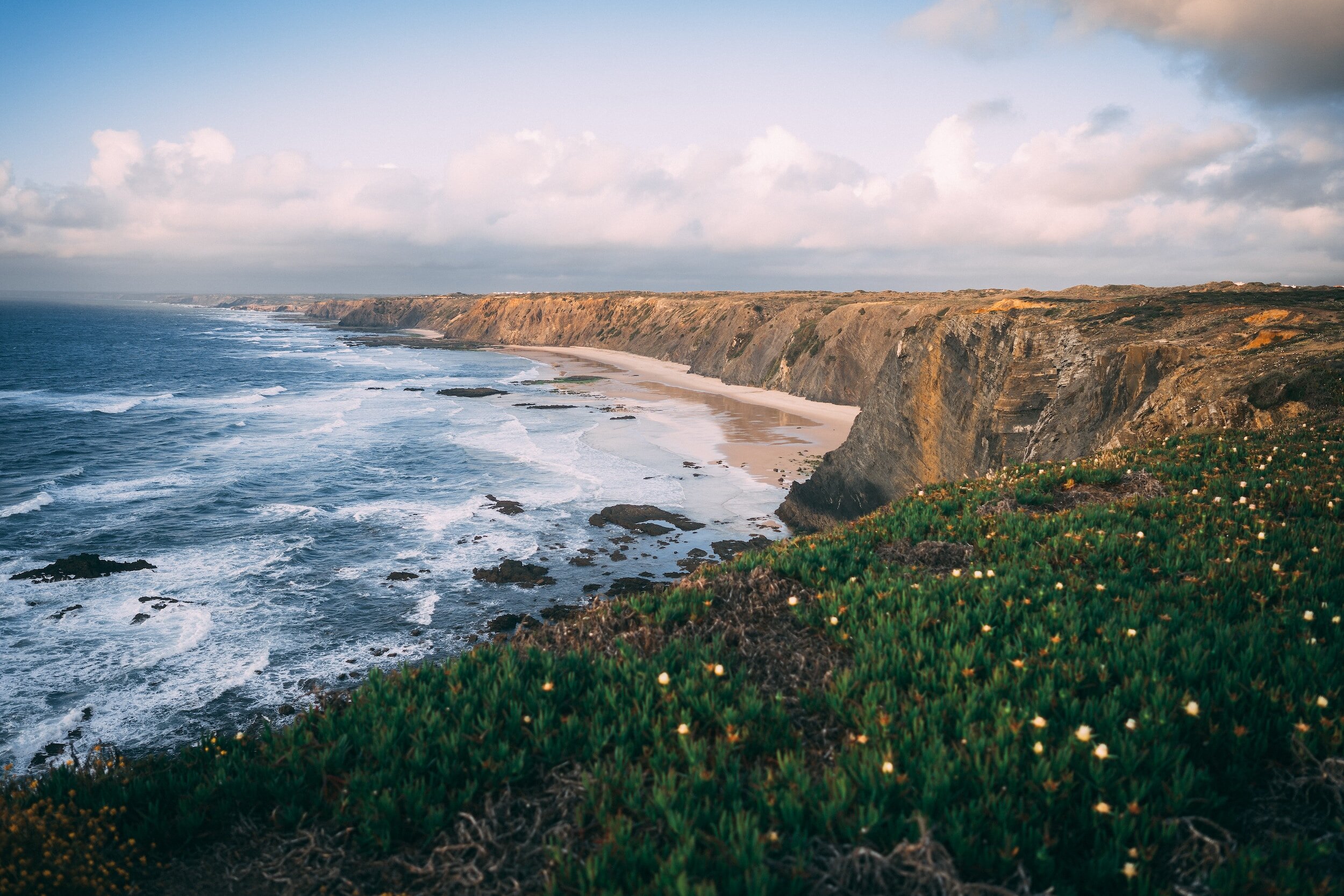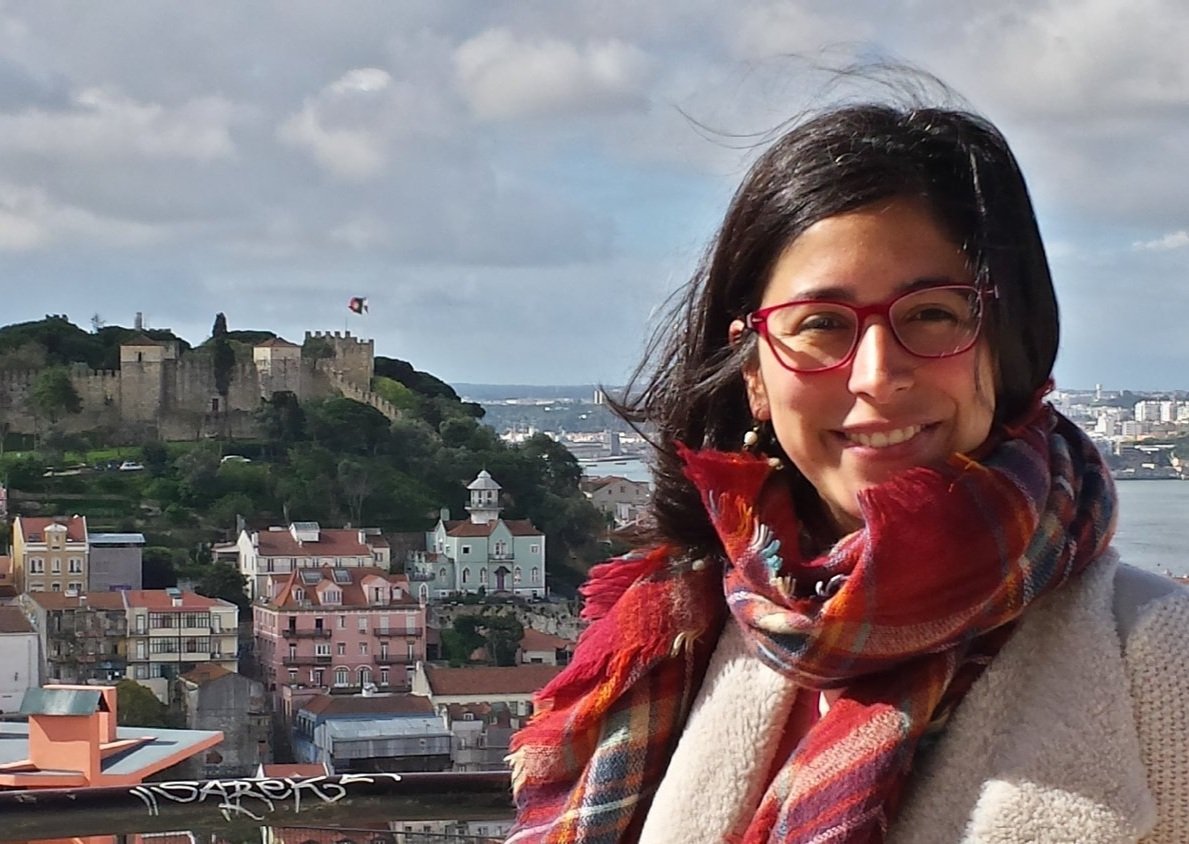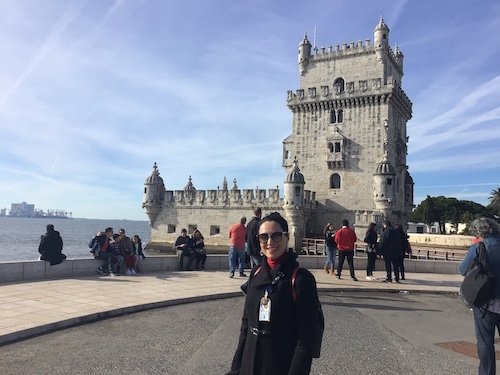5 Hidden Gem Towns in the Algarve - By a Local
The Algarve beaches bring in travelers worldwide, eager to experience southern Portugal’s sunny weather, warm temperatures, and the astonishing golden sand beaches and rugged shoreline.
However, most travelers don’t know the Algarve holds a rich history and diverse culture you would hardly find anywhere else in the country.
While most people come and visit just a few overcrowded towns and beaches (and some don’t ever even leave their all-inclusive resort), the Algarve has so much more to offer.
To help you explore deeper, I’ve put together this list of 5 of my favorite off-the-beaten-path places in my home region. Enjoy!
Table of Contents


1. Vila Real de Santo António
Praça Marquês de Pombal in the town of Vila Real de Santo António. Photo: Vitor Oliveira from Torres Vedras, PORTUGAL, CC BY-SA 2.0, via Wikimedia Commons
Overlooking the Guadiana River, this coastal town is the nearest to the Spanish border.
After the 1755 earthquake, Vila Real de Santo António was rebuilt following the strict guidelines of 18th-century urban planning. That’s why you’ll find streets in a grid pattern, similar to Lisbon’s downtown.
At Praça Marquês de Pombal, you can admire the Portuguese Cobblestone, a central obelisk, and stunning white-washed buildings around the square. You’ll also find the city church, built in a Neoclassical style, featuring a Rococo altarpiece.
A few steps away, there’s the Cultural Center, where you can admire the works of local artists.
In Vila Real de Santo António, you can walk on the waterfront promenade or visit the city harbor. The Lighthouse is another landmark you shouldn’t miss. Visit the inside by climbing the stairs or taking the lift to the top. You’ll be amazed by the city view.
Mata Nacional das Dunas is a beautifully preserved pine tree forest popular among hikers and cyclists. In fact, the Ecovia Litoral (a cycling track that follows the Algarve coastline) starts here.
In Vila Real de Santo António, you’ll find astonishing white sand beaches. Due to its proximity to the Mediterranean Sea, the ocean water is a few degrees warmer than in the rest of the Algarve.
Praia Verde, Praia de Santo António, and Monte Gordo are the most famous beaches in Vila Real de Santo António. Praia Verde is surrounded by trees (hence the name Verde, which means Green in Portuguese).
Praia Santo António is perfect for a stroll, relaxing, and enjoying the sound of the waves. Praia de Monte Gordo is a beach resort town popular among Portuguese and Spanish.
From Vila Real de Santo António, you can take a day trip to Castro Marim and wander the medieval castle, or Alcoutim, to explore a countryside village, and cross the border to Spain on a zipline.
If you wish to explore the nearest Spanish locations, get on a ferryboat to Ayamonte or drive to Seville, only 1h30 away.
2. Olhão
Olhão is one of the most underrated coastal towns in the Algarve. At only 20 minutes driving distance from Faro city center, this fishing town is the perfect base to explore the Ria Formosa and enjoy a laid-back coastal town.
Around the city center, you’ll find several murals depicting the daily lives of the fishing community that funded Olhão. To learn more about the local culture, visit the 4Elementos studio or the Atelier Zea art gallery. You’ll discover the works of local artists inspired by the city landscape.
You should also visit the Nossa Senhora do Rosário Church. Built in the 18th century, its design is quite different from others in the region. While visiting, notice the detailed stonework and the beautiful gilded wood altar.
Olhão Market is an emblematic building you can’t miss. Located by the water, the market is split between two buildings it’s here that you’ll find the freshest local produce, fish, and seafood.
One building has fruits and vegetables, while the other has fish and other seafood. Saturday is the best day for a visit since you'll find more stalls and vendors.
If, at any point during your tour inside the market, you find Queijo de Figo, Estrela de Figo, or Doce Fino, you must stop and try any of them. These are traditional (usually handmade) Algarvian sweets made from figs and almonds. They are delicious!
Once you exit the market, walk along the promenade and explore the Pescador Olhanense and Patrão Joaquim Lopes gardens. These gardens surround the market, separating the Old Town from the waterfront.
From there, you can find a ferry boat to take you to the nearest islands. Armona is one of the many barrier islands in Ria Formosa Natural Park. From Olhão, get a ferry boat and enjoy the most relaxing day at the beach.
At Armona, you can also explore an old fishermen's settlement, wander the sand dunes, or get to know one of the 50 people still living on the island.

3. Albufeira
Albufeira is one of the tourist hotspots in the Algarve. Originally a fishing town, this coastal city became known for its beach resort hotels, summer crowds, and vibrant nightlife. Even if this isn’t what you’re looking for, Albufeira is definitely worth visiting.
Wander Albufeira Old Town and admire the cobblestone streets, tiled old mansions, Santa Ana Church, and the bell tower. If you’re looking for local shops and restaurants, visit Largo Engenheiro Duarte Pacheco.
Albufeira’s Tunnel fascinates visitors worldwide. This pedestrian tunnel gives access to Tunnel Beach. One minute, you’re at the city center, and next, you’ll discover an open view of the ocean.
Nearby Albufeira city center, several beaches are often packed during the summer. Tunnel, Peneco, Pescadores, and Alemães Beach form one massive beach, making it difficult to learn where one finishes and another begins.
If you’re looking for beaches further away from the town center, try a few of my favorites: Falésia, Barranco das Belharucas, Olhos de Água, Maria Luísa, and Coelha.
In the evening, enjoy the vibrant nightlife at Rua da Oura or Old Town. Rua da Oura, also known as The Strip, is filled with themed bars and nightclubs and young people looking to party. Instead, in the Old Town, you’ll find several live performances at most bars.
Before leaving Albufeira, take a day trip to Paderne and tour the village's medieval castle. Built in the 13th century, this is one of the castles featured in the Portuguese flag. Today, you can explore the castle walls and the remains of a 16th-century church. To fully explore Paderne, try the Paderne Castle Hiking Trail.
4. Carvoeiro
Carvoeiro is a tiny fishing village close to some of the most visited landmarks in the Algarve. Yet, many visitors have no idea Carvoeiro exists.
The original fisherman settlement grew around Carvoeiro Beach, which is now one of the village’s main attractions. Here, you can soak up the sun and enjoy all the commodities of restaurants, bars, and local shops a few steps away.
For other beaches further away from Carvoeiro village center, try Praia do Carvalho. Fun fact: due to its location, smugglers used this beach to transfer their precious cargo from the boat to land. Look out for the hand-carved path on the cliffs.
If you prefer to wander around, try the scenic boardwalk between Carvoeiro and Algar Seco. Starting in front of Nossa Senhora da Encarnação Fortress, you’ll find this boardwalk built on the cliffs, offering breathtaking ocean views.
Once you get to Algar Seco, you’ll be mind-blown by the rock formation. Here, the cliffs form a hole, similar to a natural swimming pool. Beside it, there’s Boneca. From land, you’ll feel you’re on a balcony overlooking the ocean. From the sea, Boneca (Doll in Portuguese) resembles a doll's eyes.
Although the Carvoeiro boardwalk offers a staggering view, I always recommend joining a boat tour. It’s the best way to visit all the sea caves and hidden bays. And the best part is that this tour will take you into Benagil Cave and Praia da Marinha.
Yet, if you prefer to explore the Carvoeiro coastline by foot, there are a few hiking trails on the cliffs. The Seven Hanging Valleys Trail takes you from Carvoeiro to Praia da Marinha, where you’ll pass by the Benagil Cave.
However, be aware that it’s not possible to visit the cave on foot. In fact, you’ll only see a hole in the ground, which is the cave’s natural skylight.
An alternative is the Headlands Trail, which will take you from Carvoeiro to Ferragudo. Along this 13-kilometer trail, you’ll find a rugged shoreline with secluded beaches that house several marine wildlife species.
5. Aljezur
The Castle of Aljezur, overlooking the town. Photo: Concierge.2C, CC BY-SA 3.0, via Wikimedia Commons
Aljezur is a peaceful town deep in the Costa Vicentina Natural Park. This is the perfect location if you enjoy a quiet place to spend your vacation.
While wandering around Aljezur, you’ll notice how the village is divided into two sections: the Old Town, on one hill beside the small water stream, and the newer part of town, where you can find the New Church.
Roam the narrow-cobbled streets of Old Town Aljezur and explore the maze of old and refurbished houses pilled along the hillside. When you reach the top, you’ll find the village castle.
Built in the 10th century at 88 meters high, the Aljezur Castle was home to Romans, Moorish, and Portuguese. Although there isn’t much left of the monument, it holds a breathtaking view of the surroundings. On a clear day, you’ll see the ocean in the distance.
To learn more about the village's history, visit the Municipal Museum, inside the 19th-century town hall. You’ll find a collection of artifacts dating back to the Neolithic and the Moorish occupation.
Although Aljezur isn’t located by the coastline, its beaches are staggering. These are my go-to places whenever I want to escape the bustling city life during the high season. With that being said, you must try some of my favorite beaches: Amoreira, Montes Clérigos, and Arrifana.
On any of these beaches, surf schools are ready to take you in, regardless of your experience level.
Around Aljezur village (and also along the coastline), there are many hiking trails. The longest is the Fishermen’s Trail, with an astounding 226.5 kilometers. Join a guided tour or go hiking by yourself and explore unspoiled beaches and a unique seascape.
Aljezur is also known for its high-quality sweet potatoes (the best if you ask me!). So, if you’re visiting in late November, head to Festival da Batata Doce. During the weekend, local chefs prepare the best meals with the Aljezur sweet potatoes as the main ingredient. You can even buy some to take home!





Connect with a Portugal expert














